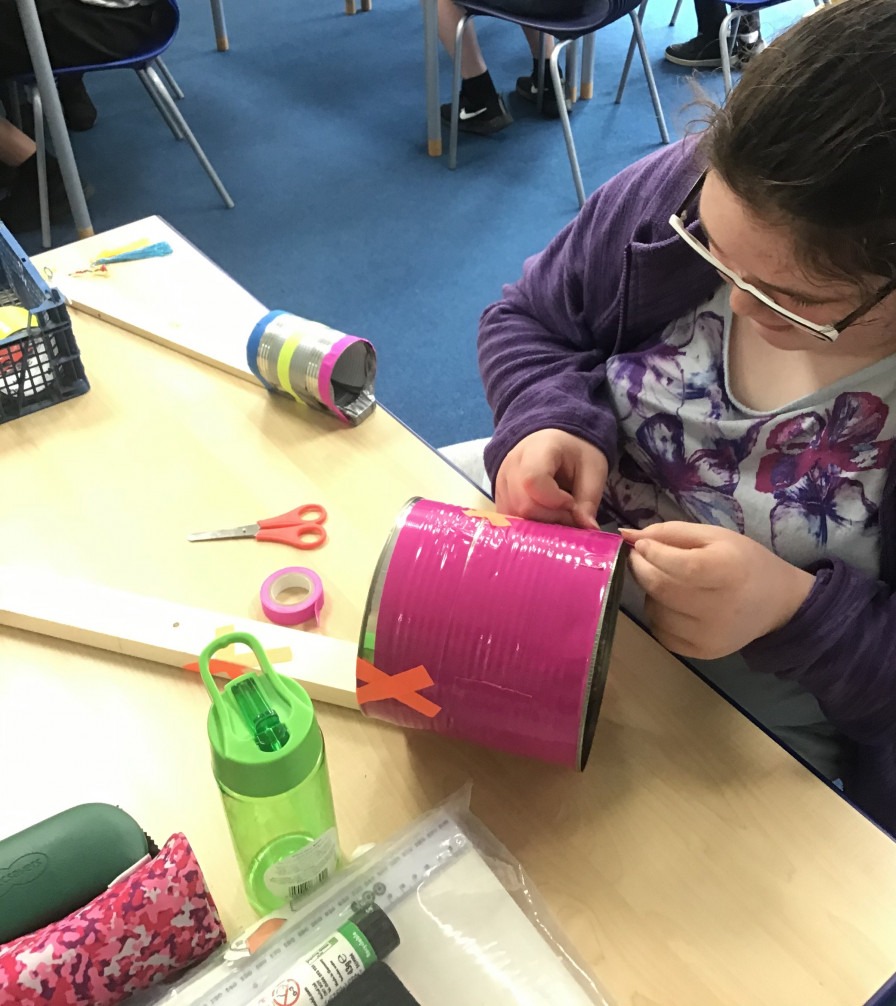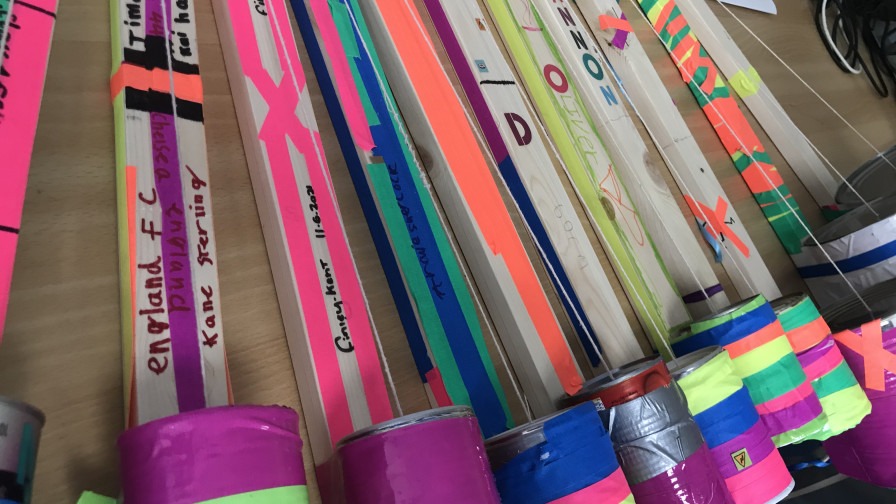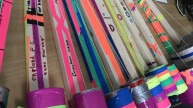Sonic Garden: Creating homemade instruments in a SEN class setting, The Canjo

The Sonic Garden is a strand of our community music work that involves exploring designing and building DIY sound making items and instruments. In 2021 we ran a 10 week pilot SEN school project that was focused on evaluating the potential of this project theme in a SEN schoool setting. In 2022/23 with support from Youth Music as part of a 3 strand project we are setting the Sonic Garden theme in a new SEN college setting, the evaluation results of this pilot were an essential part of the journey. Before documenting the current Sonic Garden project this blog will conclude looking at the findings of our pilot project.
After initially exploring the sound potential of various materials we set about creating three types of instruments that could be made by the pupils, that would enhance their experience of sound exploration and that could be used practically in our music making. This led to a great cross departemnt collaboration with the design and technology department who were able to oversee the pupils taking part in activities such as drilling and sawing. The first instrument we called the Canjo. A simple stringed instrument consisting of a length of wood, string and a metal food can. One important consideration with any kind of homemade instrument is mitigating any kind of dangers the use of homemade materials might have in a school class settinhg. Asides from activities with tools it was also important to consider the instruments themselves and to be sure they were free of sharp edges etc. This instrument was successful as catering cans were used which had been opened using a non sharp edge can opener. The wooden neck of the instrument was attached to the can using gaffa tape and the string attached to the neck using an eyelet screw which when turned acted as a sort of crude tuning peg. The string used was regular white creft string and combined with the resonant quality of teh can produced a satisfyingly loud and clear tone. The string could be pressed against the neck to create changes in pitch. Although relatively crude in terms of tuning the instruments could be played in a way that clearly enbled the player to explore making 2 or three distinct pitches and when several of these instruments were played to together exploring a few pitches the sound was distinctive and stisfying to hear. This part of our project also worked well as a holistic activity bridging music making and arts and crafts where students also decorated and personalised their instruments.


